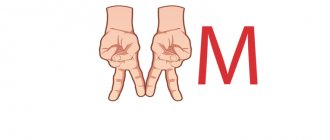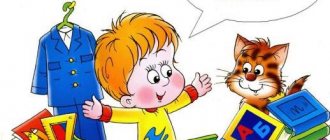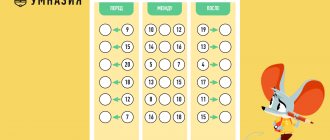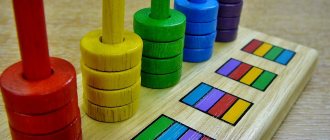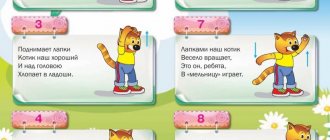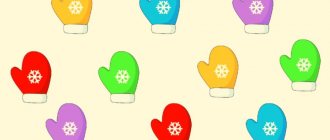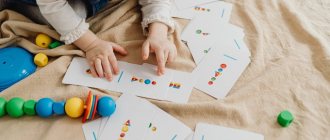February 25, 2019
Averyanova Sveta
Teaching a child to read independently before first grade without the help of teachers and professional skills is difficult, but quite possible. To do this, parents will need teaching aids, books, and methodological recommendations from the authors of the programs. We’ll tell you in more detail how to avoid learning difficulties, when and where to start, what to do if a child refuses to learn to read.
When to start
At what age do you start teaching a child to read? There is no exact answer to this question. Letter literacy lessons are taught at 4–5 years of age, before starting school, at 6–7 years of age.
The age of a preschooler is not the main indicator of readiness to learn new knowledge and concepts. It is much more important how prepared he is for classes intellectually, psychologically, physically. Pay attention to the following indicators, which must be normal to become familiar with reading:
- The baby speaks well and uses common sentences to tell a story or answer a question.
- Phonemic hearing and articulation skills are developed according to age. Pay special attention to the correct pronunciation of sounds; a preschooler must pronounce and recognize all phonemes.
- The child maintains a conversation, clearly and consistently talks about the past day, a significant event.
- A preschooler orients himself in space. Understands the directions right-left, up-down. If the baby confuses the sides, but corrects himself, this is considered the norm.
- A kindergartener can play board games and drawing for more than 10 minutes.
If all of the listed indicators are normal or with minor deviations in a preschooler, he is over 5 years old, it’s time to think about learning to read.
Stimulate unprepared six-year-olds, attract them to the alphabet by your own example, and solve speech therapy problems. If the kindergartener is still very young, 3-4 years old, but asks to talk about letters, teach him how to add syllables, meet him halfway. Conduct classes in an easy mode so as not to discourage interest in reading due to large volumes of information and difficulties in assimilating it.
Learning to distinguish sounds in words
Teaching preschoolers to read begins with teaching the child to distinguish between vowels and consonants, hard and soft consonants.
Vowels do not encounter obstacles on their way, they are formed only by the voice, they can be sung and extended. Observe how your teeth and lips behave when pronouncing a sound. If they put an obstruction, it is a consonant. To hear the stressed sound in a word, you need to pronounce it with surprise or interrogatively, or “call” with this word: drum! umbrella? cat!
The peculiarity of the perception of a 4-5 year old child is that he needs to touch, take apart and put everything back together in order to understand. The same principle should be followed when studying sounds.
Literally sort words into sounds with your child. Let the vowels be red, and the consonants be blue cubes (without labels). Build word houses out of them. Say the word “juice” yourself, then have your child say it. Listen to the sounds, observe how the lips and teeth behave, at what moment they close.
Say the first sound - is it a vowel or a consonant? Place the first cube. Say the second sound - is it a vowel or a consonant? Lay out the second cube and “read” the diagram. Are all the sounds “lined up”? Say the third sound and complete the diagram. “Read” the diagram, check if all sounds are in place? When diagramming words consisting of two syllables, indicate the stress. Next we add the designation of hard and soft sounds.
When learning sounds, take into account the peculiarity of the Russian language: spelling does not always coincide with pronunciation. Therefore, first offer words in which each sound is in a strong position, i.e. can be heard well when spoken. For vowels, this is the position under stress; the vowel “u” is always clearly audible. Monosyllabic words (one syllable) with an unpaired consonant at the end or disyllabic words (two syllables) with the vowel “u” without stress or with “s” at the end of the word are suitable. For example, monosyllabic ones: sleep, chalk, forest, spruce, ball, table; disyllabic: foxes, museum, sail, etc.
Having mastered the decomposition of such words into syllables, you can move on to two- and three-syllable words, the spelling of which coincides with the pronunciation, for example: saw, nose, cat, giraffe, cat, grandmother, fireworks, etc. In the word “nose” at the end we hear the sound “s” ” and write the letter “s”, in contrast to the word “oak”, when pronounced we hear the sound “p”, but write the letter “b”.
Only later can you offer words whose spelling and pronunciation do not match: frost, family, oak, water, forests.
Readiness test
Another option for assessing a child’s readiness to read is a test. Go through it with your preschooler and answer some of the questions yourself. Each positive answer is scored 1 point, negative – 0 points.
- Does your preschooler like to be read to?
- Does he listen carefully to someone else's reading?
- Can you retell the text you heard?
- Do you like to look at books on your own?
- Is the content more interesting to the kindergartener than the pictures?
- Does the preschooler pretend to read? For example, reveals his favorite fairy tale and retells it with expression and demonstratively runs his finger along the lines?
- Does he like playing with books and learning the alphabet more than watching cartoons?
- Does a preschooler make toy books or magazines (comics) from scrap materials?
- Does he store and examine children's books carefully?
- Does your child have an extensive vocabulary?
- Does he speak more often in complete, detailed sentences?
- Knows a large number of short poems, fairy tales, songs?
- Can you find a word starting with a given letter? For example, say a word that starts with M (substitute any phoneme).
- Does he know the alphabet, if not, does he want to learn the letters?
- If he is familiar with the letters, does he try to combine them into syllables himself?
- Can he pronounce all sounds well?
- Can you understand the difference between the words CANCER and MAC?
- Asks to teach him to read?
Sum up your points and check out the results:
0–5 points
It's too early for your baby to learn to read.
This does not interest him due to his age and temperament. If a preschooler is under 5 years old, there is no need to be upset or worried, this is normal. Children after 5 years of age with such a test result should begin to be accustomed to books, interested, captivated by pictures, then by content. Come up with a game with collections of fairy tales, read to your little one more often before bed.
6–12 points
The desire for independent reading is unstable. Pay attention to your home library, go to a bookstore together. Buying an interesting collection of fairy tales and stories with bright pictures will help you show more initiative.
Your task is to devote more time to reading, to spark interest in the plot and composition technique. For example, not reading to the end, stopping at the moment of denouement and complaining that he himself cannot read yet, so he will only find out the ending tomorrow.
13–18 points
Congratulations! Your child is ready to read completely, is waiting for new information, wants to receive it in large quantities with the help of books, reading independently. There is no need to put off learning, start today.
On a note! By learning to read, we mean purposeful work to instill the skill of consciously putting together syllables, words and sentences. Children are ready for serious activities at 5–6 years old. Letters and elementary combinations of consonants and vowels can begin to be mastered much earlier, at 2–4 years.
Glen Doman's method of teaching reading
The teaching method according to Glen Doman is popular among modern parents. According to it, you need to start working with the heir or heiress right from infancy. The method is based on showing cards with different images. These can be letters, numbers, animals, plants and much more. It depends on what you want to teach your little one.
As for reading specifically, Doman has his own guesses and statements: the child first needs to memorize the first few dozen words. Mom just shows the picture on the card for a few seconds. There may be many such cards, or there may be few. In general, the technique advises quickly changing pictures.
This technique also has a beneficial effect on the breadth of your horizons. Thanks to Doman, children literally from the cradle begin to master and “study” the surrounding objects and even what he has not yet seen at all.
Whatever method or method you choose, or even a separate manual, there are many of them now, remember one thing - do not rush your baby, let him enjoy a carefree childhood, start classes and serious training when he is completely ready for it! Feel each other...
Stages of training
Even a very inquisitive, gifted child cannot be taught to read spontaneously, unsystematically. The skill will be developed sustainably if you use an integrated approach.
Do not rush to immediately give the concept of a letter, a word, how to add and read them. Use our recommendations for creating a lesson plan.
Development of phonemic hearing and imaginative thinking at an early age
This is extremely important for the perception of sounds, letters, and text. The ability to read begins in infancy, although many parents do it unconsciously.
Play noisy games with your baby, use musical instruments, onomatopoeia. Develop a sense of rhythm with the help of a ball, jump rope, singing, poems. Learn to distinguish between quiet and loud sounds, knocking, humming; there are many options for the development of phonemic hearing.
The last stage is the differentiation of sounds at the beginning and end of a word. A child should answer such questions by age 5. You don't need to know the letters to do this. Name a word starting with C (magpie, catfish), let him come up with a few more similar ones. Then use the last letter. You say HOME, he calls MOM, MOUSE.
It will not be possible to cope with the last task right away. Don’t insist, practice on the way from kindergarten, ask to repeat the correct answer after you, spend more time studying unfamiliar sounds in nature, at home.
Getting to know sounds
Before you get acquainted with the appearance of the letters, tell your child about the sounds. Divide them into several groups. For example, vowels - they can be sung, voiced sounds - show them using the example of sounds of nature (thunder rumbles, a tiger growls), unvoiced ones relate to quiet, non-melodic sounds (shhhh, puff).
At this stage, it is important to form an image, a phonetic shell of letters.
This will help the child perform syllabic and phonemic analysis of words at school.
On a note! To distinguish between voiced and deaf when speaking, use your fingers to your throat. When pronouncing R, D, M and other voiced consonants, there will be vibration under the fingers. When pronouncing deaf words (SH, P, S, etc.) there is no vibration.
Learning and remembering letters
Start getting acquainted with letters by setting goals. Explain why you need to know this. Tell us about the possibilities that the book opens up, about writing, the culture of different peoples. The main task is to interest the baby.
Continue the motivation with simple examples of letters. Start with vowels, for example A, U. The kindergartener will quickly remember them, learn to write, and be able to read the first word: AU!!! When he realizes that reading is not difficult at all, the lessons can be entertaining and fun, move on. Combine new letters with adding syllables and simple words.

Another option for learning about letters is studying with reference to a picture. For this you need primers or ABCs. M - cars, T - cake, V - crow, etc. This method is necessary for visual children. To quickly memorize symbols and write the alphabet, use modeling, coloring letters, and tracing them in copybooks.
On a note! Nikolai Aleksandrovich Zaitsev, the author of the method of teaching reading by letters using cubes, believes that there is no need to teach knowledge about letters gradually. He suggests memorizing the entire alphabet, and then moving on to warehouses.
You can agree with his opinion or not. Focus on the temperament and abilities of your baby.
Adding the syllables
Your baby has learned to combine two vowels and can easily read AU and IA. Move on to merging vowels and consonants. First teach to read open syllables, then closed ones. Make the first words from identical combinations: MA-MA, BA-BA. Use the reverse options: AH, UM, AM, OH.
Show how to sing the syllables. Focus on the fact that the sounds run after each other. This is well shown in the ABC of Nadezhda Zhukova. After this, you can connect several syllables together and put another consonant between them: ZHU-CH-KA.
The easiest way to automate reading by syllables is syllable tables. These are cards with columns of syllables. If you read them daily, gradually accelerating the pace, the child will easily recognize them in words. We advise you to print out syllables for teaching children to read on sheets of paper and give one option per lesson.
Making up words
For this stage, cut cards with syllables will be useful. At first, take 3-4 pieces, then you can have more. Give the task to compose words from the cards received; it is better if there are several options. For example, on the table are the syllables MA, RA, ZI, PO. Let him make up the words: WINTER, TIME, FRAME.
You can download cards with syllables below, click on the picture, download and print.
The next stage is composing words with closed syllables. You will need separate letters and cards with open syllables. For example, MA, PA, SO and the letters on the cards K, F, M. You get the following set: MAC, SOK, PAGE, COM.
After 2-3 lessons, offer to compose words of several syllables. Choose simple lexemes: HOUSE, GRASS, SHOVEL.
After composing words on your own, you can move on to studying books with short texts. First, the baby reads individual words with one syllable, then with two or three. There is no need to rush, scold, or suggest.

Reading the proposals
When your preschooler easily reproduces simple words, move on to sentences. At the initial stage, use familiar combinations: MOTHER, FOREST, WATER, CAT. Select material with short texts of 2–3 sentences. To ensure that the student enjoys reading and does not want to be lazy from boredom, use poems and jokes with meaning. For example:
Vanya has new books!
The son eats the soup himself. Mom is happy.
Teddy bear collected pine cones
And he tore off all the trees.
The next stage is expressive reading of texts of 5–10 simple sentences. Use entertaining tasks, pictures, riddles, and exercises so as not to turn the learning process into a tedious task. Remember, children learn best through play.
Reading in sentences
Having mastered reading words, move on to sentences and then to short texts. There are special editions for children starting to read. It is important that reading is enjoyable for the child, challenging but doable.
What difficulties most often arise at this stage?
Sound fusion. If the child pronounces each sound separately, but cannot pronounce it together, draw a path and write two letters of the syllable along the edges. Place your child’s finger on the first sound, pull it while you “run” along the path to the second. Extend the sounds with your child, show how they merge into a word.
Regressions. These are recurrent eye movements for the purpose of re-reading what has already been read. To avoid forming the habit of reading and pronouncing a word several times, carefully observe how your child reads. Do not rush to move from syllabic reading to reading words, otherwise the child will get used to first reading to himself syllable by syllable, and then reading the whole word out loud.
Anticipation. This is the name of a semantic guess, the ability to assume the logic of a text. A very useful skill, but in the first stages of learning to read it leads to mistakes. The child, in a hurry to read the word and get approval, “omits” the endings, having read only the first syllable, “finds out” the word. To overcome such mistakes, suggest games with words, for example, reading “gibberish” poems - a set of rhyming combinations of sounds. And again, do not “press” your child in mastering the skill of reading. This is a long and complex process.
Try to immediately orient your child toward meaningful reading. Before reading, look at the illustrations, read the title, guess what the text is about, ask questions. While reading, ask clarifying questions to understand what you have already read, clarify the meaning of new words. After reading, discuss who you read about and what he/she does. Draw and act out the stories you read.
To overcome slow reading, develop your child’s memory and attention. Play with words and with words, expand your vocabulary. The success of learning to read is determined by the development of thinking, memory and speech, formed by motivation.
How to train a child
So, the preschooler learned to read. It's time to pay attention to the speed of word formation in order to meet the standards of reading technology at school. Use the following exercises to improve your speed at playing passages out loud.
Reading syllabic tables
The table can be printed in large size, click on the image and download it:
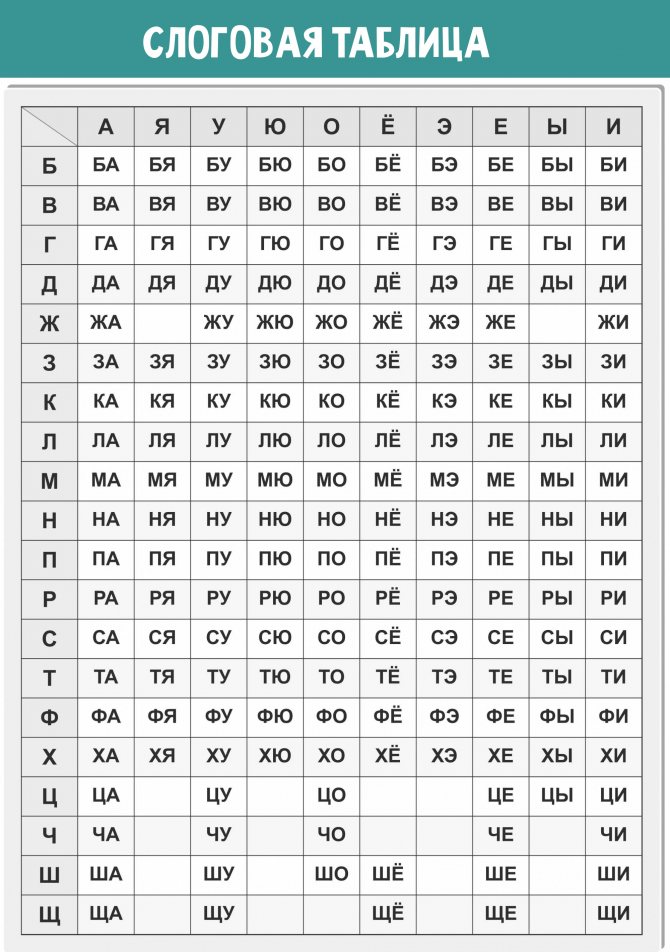
An effective means of transition from syllabic to word-by-word reading. If you train regularly, the future first grader will automatically form words from syllables.
Read the tables in columns (vertically), for 30 seconds each at the initial stage. Record the time spent in a diary and note your progress. After 7–10 days, the preschooler should achieve the following result: 3 tables in 30 seconds, that is, he will practically learn them by heart. Train every day 2 times.
Wave
Place the book on the table in front of the child, the text should be small. Let him read at a pace that is convenient for him. Then turn the textbook 90° and ask them to read a passage or the entire text. Then place it upside down and repeat the task. Increase the volume of text gradually.
Reading in passages
The exercise is suitable for children with a medium or fast speech rate. The task of the parent or teacher: to maximize the result. When choosing a training text, take into account your current reading technique and add 30 words to your result. If a preschooler reads 20 words, give the text for 50 units, if 30 words - for 60 units.
The training consists of three stages. First, the child will read the given passage without assignment, in his usual rhythm. Then he tries to keep it within 1 minute, using two attempts. Increase the number of words in the passage when the preschooler calmly and effortlessly copes with the task. Carry out the training every day 2 times (morning, evening).
Retelling the text read
This activity is useful for students with any reading rhythm. Learn to retell what you read paragraph by paragraph, then by page, then completely. If the kindergartener reads very slowly, syllable by syllable, reproduce the text out loud yourself. Let him tell you what he heard and understood. Then he will read it on his own.
Important! At the initial stage of learning to read, prioritize understanding the essence of the text, not the number of words. Move on to increasing speed after practicing automatic folding of syllables and words into sentences.
Are you ready to teach your child to read?
The child may be ready to learn, but are you ready to teach him yourself? Naturally, you don’t have to be a teacher, but you definitely need to pay attention to two important points:
- First, think about whether you yourself remember the alphabet exactly, and whether you are confused about the names of the letters. For self-test, take any reference book. If you notice that you yourself say something like “le”, “me”, “ne”, etc., it’s worth working on these points, because the correct pronunciation is “el”, “em”, “en”, etc. Also consider whether you recognize the difference between letter names and their sounds in words. It is very important to understand that depending on the environment with other letters, the same letter can sound differently. Soon you will have to tell your baby all this, so figure it out yourself.
- Secondly, are you ready to teach your child from the point of view of pedagogy and psychology? Of course, if he learns everything quickly and immediately, this is very good, but if you are faced with the need to talk about the same thing 20-30 times? Understand that when teaching, you cannot take a rigid parental position, saying, “What’s incomprehensible here?”, and you should always remain calm, patient and friendly. So here, too, you should be extremely careful, and if you feel that you are not yet ready to start teaching your child independently, then you should wait a little.
If you have taken everything into account and feel confident in yourself, then you can start learning. And now let's talk a little about several methods with which you can start teaching reading to little ones.
Useful tips
Teaching children to read can be a struggle for first graders and their parents. To avoid scandals, disappointments and not discourage your desire to master literacy, use these little tricks:
- Exercise regularly. Lessons conducted sporadically or poorly organized will not give the desired effect. The child will simply forget all the information. Make a study plan and follow it strictly. Sometimes take a vacation for a couple of days.
- Learn through play. For example, build houses from letter cubes and transport them on a truck to form syllables. Without strict rules and sitting at a table for 30–40 minutes, information will be absorbed easily and with interest.
- Follow the sequence of training. The plan may look like this: sounds - letters - syllables - words - sentences - texts. Move from simple to complex consistently.
- Use video tutorials to practice at home. This option is suitable for older preschoolers; use it for self-education for parents.
- Review what you have learned regularly. Use different methods for this: print out cards, make drawings, learn riddles, songs.
- Look for letters everywhere.
To practice reading, it is not necessary to have a book or blocks at hand. During a walk, ask your child to point out familiar symbols on the bulletin board, on the price tag in the store, on house signs. This is a great practical experience. - Don't force reading if your child doesn't want to study. You definitely shouldn’t teach syllabic reading to 3-4 year old children, they don’t need it and aren’t interested. It’s time for preschoolers, 6–7 years old, to learn to read. But if the kindergartener doesn’t want to, use different methods of motivation to revive interest: your own example, rewards for hard work, praise.
Rules to help teach children to read
So, the child is psychologically ready to master a new skill. Moreover, he himself reaches out to books, he loves listening to fairy tales and wants to learn to read, so as not to ask his mother about it. So, you need to start learning.
But only correctly, taking into account the recommendations of specialists and experienced parents.
- My own example. If parents love to read and constantly sit up with a book in the evenings, there is a high probability that the child will be drawn to reading. On the contrary, if adults prefer to sit on the computer or watch TV series, the baby will put the book away.
- Beautiful illustrations. The first books to read should have bright illustrations that will attract children's attention. In addition, plot pictures will help the child follow the intrigue of the fairy tale.
- Shared reading and discussion. Be sure to read books to your child regularly, turn reading into a kind of evening ritual. At the same time, you can and should be interested in children’s opinions about what they read.
- Search for letters. Letters are found everywhere: on magazine covers, on store signs, on street advertising. Draw your child's attention to this fact and ask him to find a familiar letter or word on the sign.
- Games with letters and words. There are a great variety of similar games: searching for a word starting with a given letter, letter lotto, composing short words from longer ones, tracing the outline of letters with your finger, laying them out from scrap materials.
And, perhaps, the main recommendation from experts. Never force a child to read if he does not want to. This is especially true for young children who are simply not ready for such systematic activities. But you should also look for a special approach to a reluctant preschooler - encouragement, praise, joint games.
Games and exercises
To memorize letters, syllables, develop memory, and attention, it is useful to use a variety of games and exercises. They help overcome fears, doubts, and automate reading skills.
To learn letters
- Together with your child, create a collection of homemade letters from paper and plasticine. Play with crafts, try to add syllables, name the sound they represent.
- Memorizing poems, songs into individual letters, sounds.
- Letter lotto.
- Who is bigger? The one who remembers more words starting with a given letter wins. You can use the opposite option: we name words that end with a certain sound.
- Say the opposite! Speak short words (mouth, poppy, house). The child must say them backwards.
- Spell the word. Take small word forms into parts, naming the sounds: D-O-M.
For learning to read syllables
- Make up a word. You will need cards with syllables and letters. The child himself will select the desired option and read it. You can add pictures to the task, then the child will make up a word on a given topic.
- We are looking for short words in long ones. From the letters of the word TRUCK you need to make one-syllable words: load, call, circle.
- Table walkers. Draw a movement diagram, write syllables in the cells. The child reads the chips every time he moves.
- Search for syllables in texts. Take any work of art, a fairy tale. Let him look for a familiar syllable in words, circle it with a pencil. If you manage not to miss a single syllable in the passage, the student receives a reward.

To develop reading skills
- Find the extra or missing letter. Write the misspelled words: GU-ZO-VIK (the letter P is missing), YAM-BLO-KO (the M is extra). The exercise develops attention and spelling vigilance. This will be very useful in Russian language lessons in first grade.
- Make a menu. The child becomes a cook and creates a menu for the family for the day. His task is complicated by the fact that dishes must begin with the same letter, for example K.
- What do you see with the letter..? Think of any phoneme, ask the student to name all the objects that he sees around him that begin with this letter (K - books, cat, pan, etc.).
- Who is faster? Write words starting with one letter on a card: chalk, moth, soap, honey, stranded. The goal is to read the list the fastest. Reading speed, attention, and mental abilities develop.
We teach a child to divide words into syllables
Before your child begins to master literacy, teach him to divide words into syllables. Pronounce the words by clapping the number of syllables. In Russian, a word has as many syllables as there are vowels: sa-mo-let, ka-ran-dash - 3 vowels, 3 syllables; u-zhi - 2 vowels, 2 syllables; sport - 1 vowel, 1 syllable, 1 clap.
Play Finish the Word. You throw the ball to the child, saying the first syllable of the word, for example, “ma.” The child returns the ball, calling the ending, for example, “sha.” Say the word in full: Ma-sha. Guess the endings of words, change places with your child.
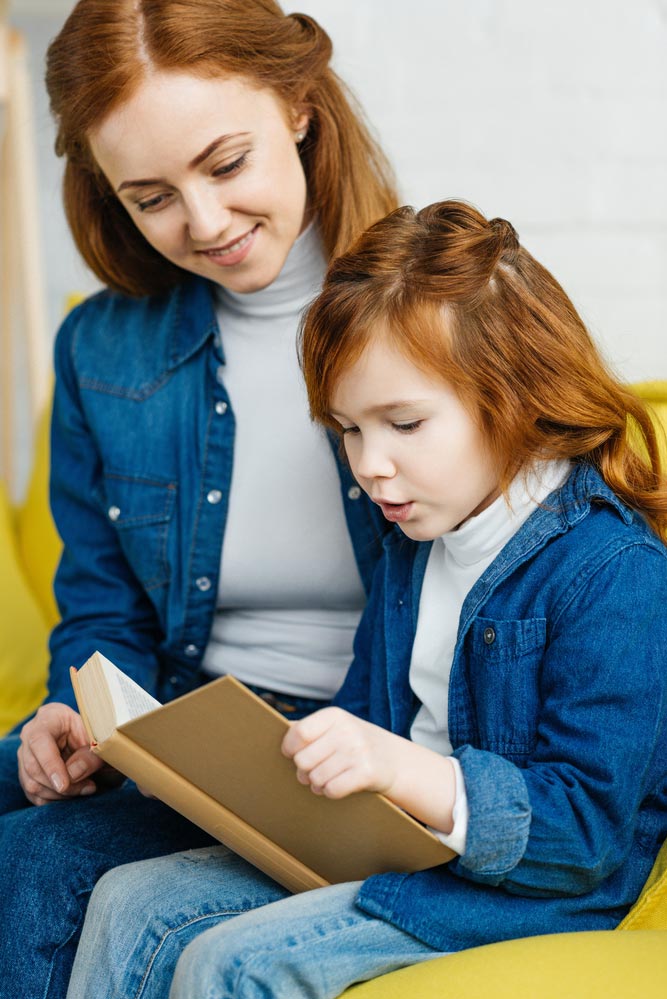
Basic techniques
There are really many methods for early learning to read. They can be divided into traditional and non-traditional.
The first ones, easy to use at home, are suitable for children from 5–6 years old. These are ABC books.
The second ones are universal and can be used at an early stage and closer to school age. These are cards, cubes.
To master the teaching methodology in a non-traditional program, you will need deep knowledge of child psychology, sound features of vowels and consonants. Let's take a closer look at some of the author's methods.
Primers and ABCs
They are convenient because the child learns letters and sounds at the same time, gradually putting them into syllables, then into words. Each alphabetic character is accompanied by a picture. An elephant is drawn next to the letter C, and a watermelon is drawn next to the A. Syllability goes parallel to memorizing letters. That is, the set of phonemes for reading increases in the process of recognizing the alphabet.
There is an opinion that this method of teaching reading is too complex, requires perseverance, and is suitable for children with a great thirst for knowledge. But he was the main one in the Soviet school.
The arguments against book learning can be argued. For example, Zhukova’s primer clearly shows children how to read sounds together without naming them separately.
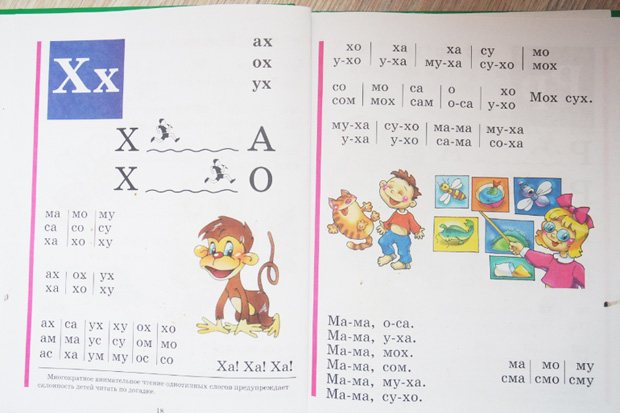
The ABCs are accompanied by bright pictures and plot drawings based on the text. By the end of the course, the preschooler will read not only syllables, but also large passages, know what a syllable is and stress. It is impossible to achieve such a result with the help of cubes and cards alone.
On a note! In addition to the primer by Nadezhda Zhukova, textbooks for teaching reading from an early age by Dmitry Fonin, Vseslav Goretsky, and Nadezhda Betenkova are popular among teachers and parents.
Voskobovich's tower cubes and folding cards
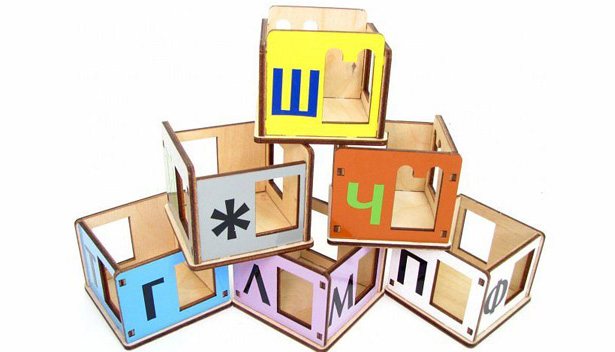
Cards with pictures are intended for teaching children from 3-4 years old. They have bright pictures and warehouses painted on them. The cards come with a CD with songs, the text of the verses is written under the pictures. First, the child sings the words, then finds them in the text and gradually learns to read.
Voskobovich's tower cubes are designed for kindergarteners over 4 years old. The set consists of 12 cubes with a cavity with consonants written on them, and 12 cubes with vowels. The child’s task, after becoming familiar with the Russian alphabet, is to create a warehouse with which any word begins. This can be one letter or a pair.
Then syllables are studied. Children match the vowel to the consonant and assemble a syllable from two cubes. Then words are made from several cubes.
Zaitsev cubes
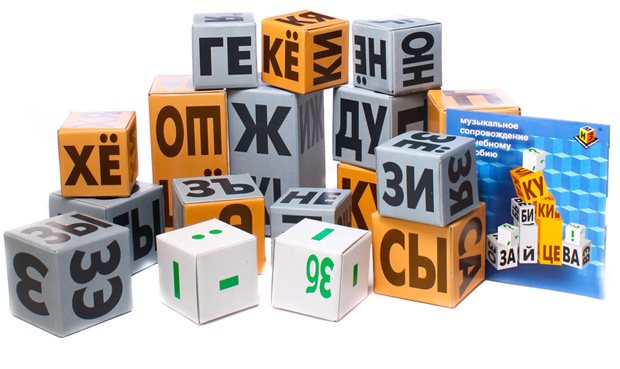
Zaitsev's method is based on reading by syllables, do not confuse it with syllables. A warehouse can consist of one letter or several. For example, in the word SANKY there are 3 warehouses: SA-N-KI, in the word MAMA there are 2 warehouses: MA-MA. According to the author, it is easier for a child to learn to read by words than by syllables. And this is confirmed in practice.
The training set includes 52 cubes: all the letters of the Russian alphabet, combinations of consonants and vowels. They are different in shape, filling and tactile sensations.
For example, voiceless consonants are indicated on cubes with pieces of wood inside, while voiced consonants are filled with metal parts. That is, the child does not know that this letter is voiceless or voiced, but hears what type of sound it makes. Additionally, tables for warehouses, audio cassettes with songs, and a manual with descriptions of lessons are used.
In the form of a game, the child gets acquainted with the alphabet, and with the entire set of letters at once. Then he independently combines them into words, smoothly sings the lines with the help of special chants, and works with the table.
The Zaitsev teaching method is suitable for children who do not like and cannot sit still for a long time. Static lessons can be easily replaced with a dynamic game.
Chaplygin cubes
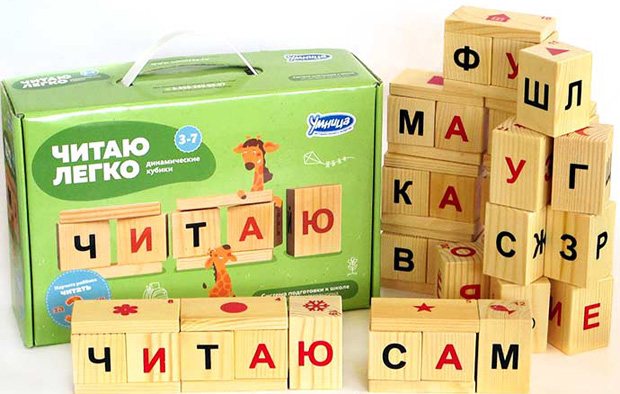
Suitable for children from 4 years old. The set consists of 10 cubes, 10 blocks. The preschooler spins the cubes, looks for the necessary syllables, and reads them. Then he makes up simple words. Simultaneously with reading, the outline of letter symbols is learned.
During the game, motor skills, thinking, memory, and attention are involved. According to parents and teachers, this technique is effective and easy to do at home.
Doman cards
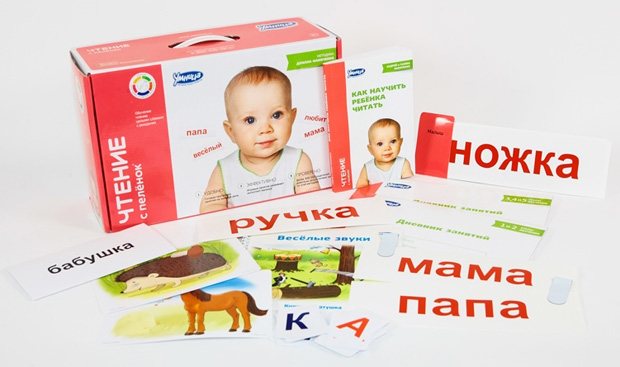
The author of the program, American doctor Glen Doman, suggests teaching children to read whole words when they do not yet know letters and do not even know how to speak. Parents need to purchase a set of cards, show them to the newborn for a couple of seconds, pronounce what is written, quickly changing to the next one.
In the first lessons there will be 15 of them, then the number increases. New material is presented after repeating what has already been covered. At 1.5–2 years old, the child will be able to say for himself what is written on the card.
According to psychiatrists and neuropsychologists, the Doman card training system is based not on reading, but on automatic memorization of visual images. If you offer a child a word that has not yet been shown to him, he will not be able to read it.
Method of reading syllables by Elena Bakhtina
The author's methodology is based on syllabic reading. The child is offered cards with letter combinations. The student must read them fluently and recognize them automatically. Then you can start composing words and texts.
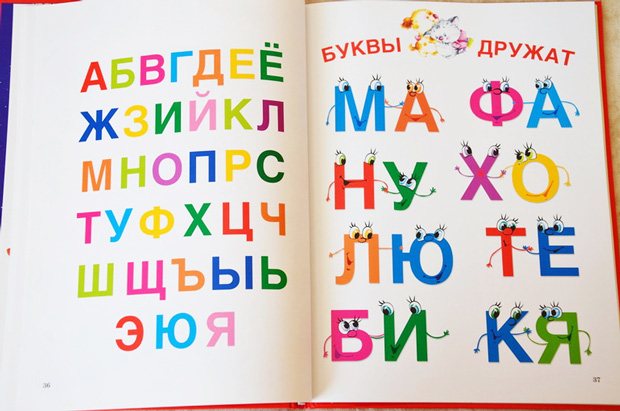
For ease of memorization, the letters on the cards are painted in different colors: blue - consonants, red - vowels, ь, ъ - black. Read open and then closed syllables first. Leave combinations of vowels and sibilants for the last stage, they are much more difficult to pronounce.
On a note! You don’t need to look for books and educational kits in the store. Order them online. There you can also read reviews from parents and early development center methodologists about practical experience in using each program.
First steps to reading: getting to know the letters
To teach a child to read, it is necessary to maintain an interest in books and letters from an early age. As a rule, at 2-3 years old children begin to show attention to the alphabet. It is very important for parents to provide the right developmental space at this moment.
Visualization
A child will remember the letters quite quickly if a bright poster with the Russian alphabet is in his field of vision. The baby points to the letter - say the corresponding sound. You may have to return to “A” and “B” more than once and repeat them, but this is how your baby will remember them faster. For busy parents, an interactive panel with letters will be a good help - it itself sounds the letter that the child clicks on.
Touch
To memorize the letters of the alphabet, it is important for a child to use his sense of touch. To develop your child’s abstract thinking, invite him to get acquainted with letters molded from plasticine or cut out of cardboard. Pay attention to the similarity of objects and letters - the horizontal bar looks like a “P”, and the donut is the spitting image of the letter “O”.
Tea party by letters
The process of learning letters will be very fun and tasty if you offer your child an edible alphabet. Using curly pasta, you can cook Abvgdeyka soup, and for dessert, bake your own homemade alphabet cookies.
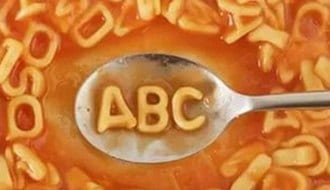
Magnetic entertainment
With the help of a magnetic alphabet, you can turn the process of learning letters into a fun and memorable game. For example, 1-2 year old children can be lured by simply attaching a letter to the surface of the refrigerator and saying it. “Give me the letter! What do we have? This is the letter A! If your child is already 3 years old, he will enjoy playing “magnetic fishing.” You need all the magnetic letters in a container, and make an impromptu fishing rod from a stick and string with a magnet. Having caught a “fish”, pronounce its name, drawing an analogy with the word. “This is a fish! Look how much she looks like a beetle!”
By keys
Children love to imitate the actions of adults. Let your child press buttons in an open text editor to his heart's content - he will be interested in the letters appearing on the screen. Show me how to type the simplest word “mother”. You can print out the first letter and give it to your child. Even if there is a completely unthinkable combination, this will be a kind of impetus for memorizing the alphabet. Also, to master letters, you can give your child an old computer keyboard to “tear to pieces.”
Books on the topic
There is no way to do without books and collections of texts when teaching reading at home. Please take a look at the following collection of useful tutorials.
Fedina Olga and Sergey “How to teach a child to read”
Textbook for preschoolers from 4–5 years old. The authors of the methodology took as a basis the syllabic method, which, according to parents, is the most effective and easiest way to teach reading. The book comes with useful tips for conducting classes; the lessons are divided into blocks, each accompanied by bright pictures.
Uzorova O. V., Nefedova E. A. “100 educational texts for teaching children to read”
The collection of texts is suitable for preparing six- and seven-year-old children for school. The educational material is accompanied by entertaining tasks and exercises for developing horizons, memory, attention, and fine motor skills. For ease of reading, words in the text are divided into syllables by vertical bars. Short stories are dedicated to the animal world, fish. There are coloring pages at the beginning or end of the text.
Baranova E. E., Razumovskaya O. K. “How to teach your child to read”
The collection of tasks is suitable for children aged 4–5 years. The authors use the syllabic method of teaching reading and invite children to play train with letters. You need to cut out a paper toy from a book yourself, put cards with letters in it and play with syllables. Classes are held in a playful way, so information is remembered quickly and easily.
Zhukova N. S. “Primer”
The textbook is based on the traditional syllable-by-syllable reading method. You can start lessons without knowing the sounds and letters. Learning the alphabet goes parallel to the formation of the skill of putting letters into syllables. The book is written in large print and illustrated with bright pictures. Zhukova’s primer is recommended by the Ministry of Education of the Russian Federation and has been used in kindergartens and development centers for more than 10 years.
Exercises with words: strengthening the skill
As soon as the child learns to merge letters into syllables, parents can be congratulated for being halfway through the journey. Now the most important thing is to consolidate the acquired skill. In this case, fun and interesting tasks will be used.
| What to play | What to do |
| Who eats what? | Write the names of the animals in the column: CAT, KO-RO-VA, SO-BA-KA, BEL-KA, RABBIT, MOUSE. And to the right and left of the words, draw pictures: fish, grass, bone, nut, carrot, cheese. The child’s task is to read the word and “feed” each pet with the right food using the arrows. |
| Who's the odd one out? | Write a few words in a column: GRU-SHA, YAB-LO-KO, A-NA-US, PO-MI-DOR. Ask your child to cross out the extra word, and be sure to explain his choice. This way you can play with the names of vegetables, clothes/shoes, flowers, trees, birds, etc. |
| Big and small | Write the words DE-RE-VO, GO-RA, GRU-ZO-VIK, ZHI-RAF, I-GO-DA, DROP-LA, BU-SI-NA at the top of the sheet. Below, draw two pictures - a house (big) and a chicken (small). Let the child read the words, determine which ones are big and small, and connect them with lines to the matching pictures (a berry, a drop and a bead for a chicken, the rest of the words for a house). In a similar way, words can be divided into sweet and sour, heavy and light, etc. |
| Who lives where? | Write down the names of wild and domestic animals mixed together: WOLF, ELK, LI-SA, KA-BAN, KO-RO-VA, KO-ZA, CAT, SO-BA-KA, HEDGEHOG. Under the words, draw a forest on one side, and a village hut with a fence on the other. Let the child read the words and use arrows to depict where each of the animals lives. |
Mobile applications and simulators
If it is impossible to sit the baby down with books, they do not like to play with cubes or cards with letters, use interactive simulators to teach reading. You can download them to your tablet, mobile phone (iPhone and Android), play at home or on the go.
Luntik. Let's learn to read!
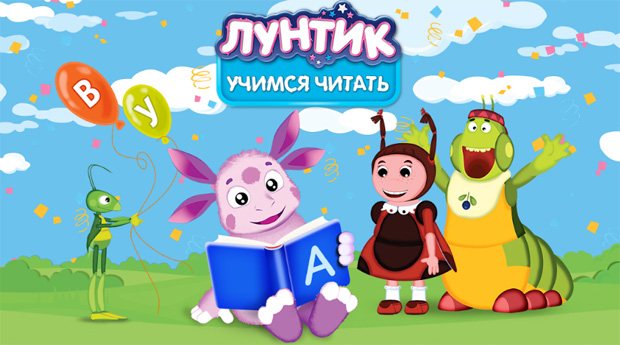
With your favorite cartoon characters, your child will learn to recognize letters, put them into syllables, and read words. The application is suitable for both one-year-old children and future first-graders. The program is divided into 10 levels: 4 simplest and 6 more difficult.
Talking ABC

The preschooler will learn the alphabet with the help of songs and plasticine helpers. Bright animation and fun games make lessons entertaining and not boring.
Learning to read by syllables
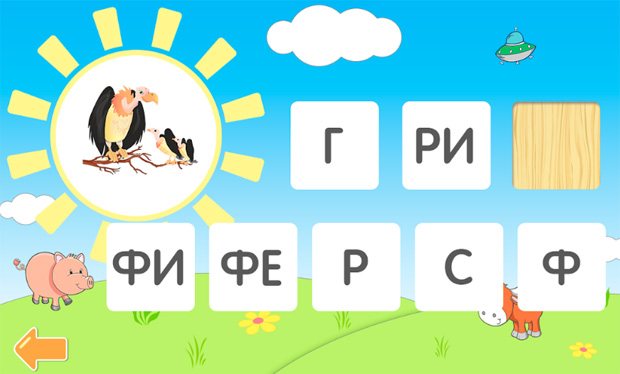
The application is designed for kindergarteners aged 5–7 years who know letters. The teaching methodology is based on Zaitsev’s program. Users make words from warehouses, cards with letters and syllables. With the help of simple games and entertaining tasks, the future schoolchild quickly learns to read and divide words into parts.
ABC for children! Let's learn the alphabet!
The letters are hidden in colored boxes with pictures. The task is to catch them and form a word. The game is designed for children aged 2–3 years in the “Learning Letters” mode, and preschoolers aged 4–7 years in the “Read by Syllables” block. The app has received a lot of positive feedback from parents.
Learning letters is fun!
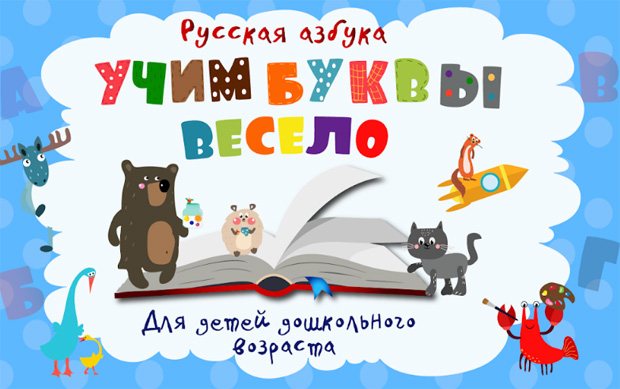
The program is useful for kindergarteners unfamiliar with the alphabet. The games are divided into three parts. In the first, the child gets acquainted with letters using pictures, learns to pronounce them, and recognize them. In the second, he consolidates the acquired knowledge and composes words. In the third, smart coloring pages and favorite cartoon characters await him. You need to color the pictures using letters.
With the help of computer games, even a weak child can learn the alphabet and learn to read syllables, words, and sentences. In addition to educational exercises, the educational site has a lot of tasks to develop attention, memory, and reaction speed.
Stage No. 2. Introducing Sound
Next, you need to highlight the first sound in the word. To do this, say the word and draw out the first sound, pronounce it louder and more clearly than others. Invite your child to repeat after you. He must determine and name the first sound in the word he heard.
Now you need to play with this sound:
- pronounce with different voice strength (quieter - louder);
- sing;
- speak with different intonations.
It is important to pay attention to the articulation of sound. Be sure to discuss with your child how to pronounce this sound, in what position the lips, teeth and tongue are. To do this, invite him to watch you or look at himself in the mirror. When learning vowel sounds, it is recommended to show the child the corresponding demonstration pictures.
Games to develop phonetic hearing
When you have already learned several sounds with your child, be sure to play the game “Guess the Sound” with him - based on the position of the articulation organs, he must guess what sound you are going to pronounce.
After such games, offer your child other exercises to develop phonetic hearing:
- Name words that also begin with the desired sound.
- “Catch the sound” - the adult must pronounce different words, and the baby repeats them and if he hears the specified sound in it, he claps his hands.
- “Settled in the house” - make a cardboard template of a house with 3-4 windows and invite the child to place pictures in them with those objects whose names begin with the desired sound.
- “Say the word” - you name part of the word, and the child must say it in full, adding a sound at the beginning (at the end) of the word.
Attention! There is no need to use more than 2 exercises in one lesson.
Answers to frequently asked questions
How long does it take to teach a child to read?
Learning to read from scratch can take 6-8 months with a 4-5 year old child. An adult child, 6–7 years old, masters the skill faster, in 3–6 months. If you attend classes at a development center, a tutor, and read additionally at home, the period is reduced to 2–4 months.
Although in this video you can get acquainted with the real story of how a child was taught to read syllables in 2 hours.
How to teach reading if a child doesn’t want to?
A categorical refusal to study with books, tables, and cubes can be overcome by increasing motivation. Interest a reluctant woman in a bright book on her favorite topic, tell her why it is useful and necessary to be able to read. Look at pictures in books every day, read in the evening, during the day, discuss the plot.
When the first signs of interest appear, try playing with letters, solving puzzles, and using coloring books.
Can a child learn to read on his own?
This option is possible if there are older children in the family. The kid watches homework being done and begins to imitate the school students. When it turns out that the baby has learned the letters himself, parents only need to speed up the process a little.
Buy an ABC book, give some theory, apply several speed reading methods. If a preschooler is inclined to self-education, is diligent, and will show good results.
Should educators teach children to read?
Reading lessons are not included in the mandatory kindergarten curriculum. Teachers in the preparatory group can give a small amount of information about sounds and letters.
Reading is taught in elementary school. The exception is specialized or private kindergartens, where parents pay for additional classes in preparation for first grade.
